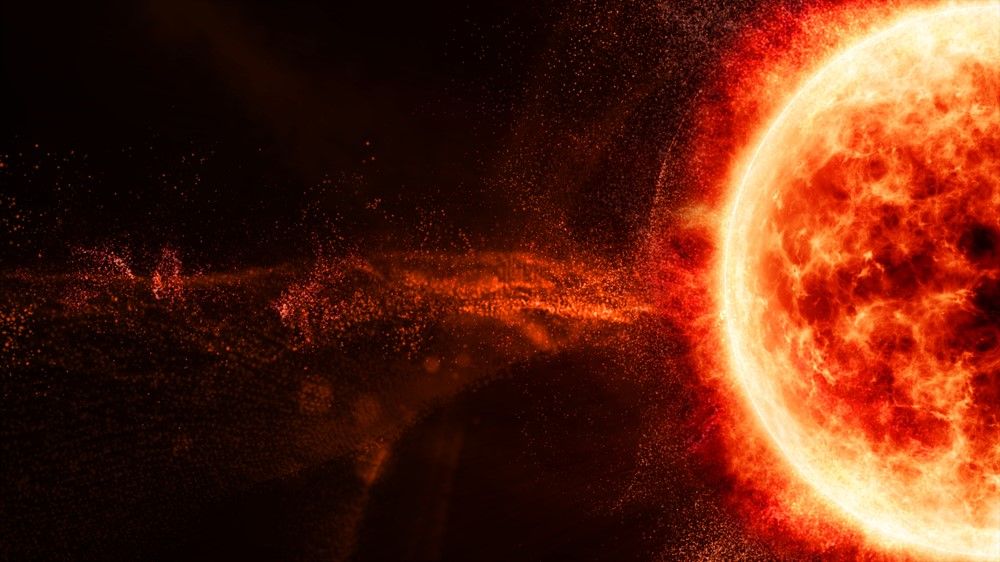In a cosmic spectacle that has left scientists astounded, a colossal dark hole has ripped through the sun’s surface, unleashing a torrent of superfast solar wind hurtling directly toward Earth. This monstrous gap, known as a coronal hole, has defied expectations, stretching wider than 60 Earths combined. The solar drama began on December 2, when the mysterious void materialized near the sun’s equator, quickly expanding to an unprecedented width of around 497,000 miles (800,000 kilometers) within 24 hours.
Understanding Coronal Hole in the Sun
Coronal holes, explained by the National Oceanic and Atmospheric Administration (NOAA), manifest when the sun’s magnetic fields unexpectedly part ways, allowing solar wind to stream away from the upper surface. These cooler, less dense areas create dark patches—resembling sunspots but visible only in ultraviolet light.
Radiation from coronal holes races at breakneck speeds, significantly surpassing the standard solar wind. These formidable streams often disturb Earth’s magnetic shield, triggering geomagnetic storms. The last coronal hole, appearing in March, unleashed the most potent geomagnetic storm experienced on Earth in over six years.
Anticipated Solar Drama
Initial expectations for the colossal coronal hole in the sun hinted at a potential moderate (G2) geomagnetic storm, promising radio blackouts and mesmerizing auroral displays. However, the solar wind’s intensity fell short, resulting in a milder (G1) storm. Yet, the possibility of auroras gracing high latitudes remains, infusing celestial drama into our skies.
As the colossal void in the sun continues its cosmic performance, the duration of its spectacle remains uncertain. According to NOAA, past coronal holes have lingered for more than a single solar rotation (27 days). Nonetheless, this particular hole is set to rotate away from Earth in the coming days, leaving lingering questions about the mysteries it has unveiled.
Solar Activity’s Unpredictable Course
Solar activity has surged throughout the year as the sun hurtles toward the explosive peak of its approximately 11-year solar cycle, known as the solar maximum. However, a twist perplexes scientists—the colossal coronal hole does not align with the anticipated surge in solar activity. While coronal holes typically manifest during the solar minimum, they are more common near the sun’s poles during the solar maximum. The appearance of this colossal hole near the equator, so close to the solar maximum, adds an intriguing layer to the solar narrative.

Signs of Increased Activity in the Hole in the Sun
In recent weeks, the sun has displayed heightened activity, introducing further twists to the unfolding drama. On November 18, a colossal “sunspot archipelago” emerged on the sun’s near side, featuring at least five distinct sunspot groups. Since then, it has unleashed dozens of solar storms into space, captivating observers with its celestial prowess.
The drama reached new heights on November 25 with an explosive “canyon of fire” eruption near the sun’s equator, releasing a coronal mass ejection (CME)—a fast-moving cloud of magnetized plasma—that collided with Earth, inducing rare orange auroras. Just three days later, on November 28, an “almost X-class” solar flare erupted, birthing a cannibal CME that triggered a geomagnetic storm. This storm painted lower latitudes with spectacular auroras over the weekend, creating a celestial spectacle for skygazers.
Solar Maximum Beckons Sooner than Expected
The recent surge in solar activity is a harbinger of the sun’s imminent transition to the solar maximum. In a surprising twist, scientists revised their solar cycle forecasts in October, now predicting that the explosive peak could commence as early as 2024. This revelation adds an element of anticipation to the celestial narrative, as we brace ourselves for the heightened solar activity expected in the coming years.
Whether the solar winds bring mild storms or dazzling auroras, the cosmic performance overhead serves as a reminder of the intricate dance between the sun and our planet. As the sun approaches its explosive peak, we eagerly await the next act in this celestial saga, prepared for the unpredictable twists that the cosmos may reveal.


